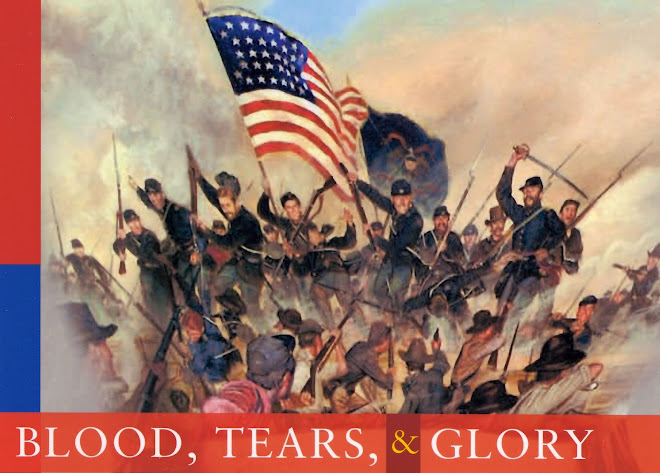“The 'Northwest' Will End the War"
In war, things can change in the wink of an eye. Today is an example.
The day starts with Col. William B. Hazen, commander of the 41st Ohio, stationed in Gallipolis, Ohio, preparing a lightning strike against Confederate raiders causing mischief in western Virginia. Hazen plans to cross the Ohio River and--uninvited and without orders--enter the region, properly the domain of Union Brig. Gen. William S. Rosecrans. Old Rosy is irritated by this bold interloper from Ohio, but Hazen—a veteran Indian fighter who fears no one—doesn’t care a fig what Rosecrans thinks.
Suddenly, Hazen receives orders from elsewhere to join Brig. Gen. Don Carlos Buell’s new command, headquartered in Louisville, Kentucky. The lightning strike into western Virginia is abruptly abandoned and Hazen begins barking orders in another direction. He takes a moment, however, to toss a last insolent message over his shoulder to Rosecrans’ headquarters: “I am not a little surprised at the tenor of your last dispatch,” he writes, annoyed by the busybody tone of that message. Saucily, he asserts that plans made by experienced Indian fighters who, like himself, know their business “invariably succeed.” Take that, General Rosecrans, and goodbye.
Hazen and his regiment are part of a troop buildup in Kentucky—just the thing that Buell's predecessor, William Tecumseh Sherman, had begged for. Ironically, Sherman has been gone from Kentucky only a few days.
Ohioans dominate in the Union's defense of Kentucky, a border state claimed by both sides in the war. Today’s edition of The New York Times reports the numbers in the Bluegrass State: 11 regiments from Ohio, 8 from Illinois, 7 from Illinois, 3 Pennsylvania, 2 from Wisconsin, and 1 from Michigan, 32 regiments totaling about 20,000 men. Moreover, the Times correspondent notes with satisfaction, another 10,000 men are nearby in Ohio’s biggest military camps, and 7 of those regiments are “ready to go.”
In both Kentucky and western Virginia, therefore, Ohio has supplied the largest number of troops. Ohio is the linchpin of the Union’s Western Theater operations.
>>> Meanwhile, near Washington, Maj. Gen. George B. McClellan’s huge Army of the Potomac remains rooted in its camps, moving only for the elegant reviews that McClellan likes to stage for the Capital’s elite. The Times correspondent in Kentucky comments bitingly, “If the Grand Army of the Potomac will only take care of Virginia and Maryland, [the Midwestern states] will be more than a match for the other 10 secessionist states. Let the grand army stand still and the Northwest [meaning the Midwest] with the aid of the navy will end the war.”
Your suggestions, comments, and questions are always welcome. Address the author: Ohioan@bloodtearsandglory.com
For more information about the author’s book, go to http://www.orangefrazer.com/btg



No comments:
Post a Comment